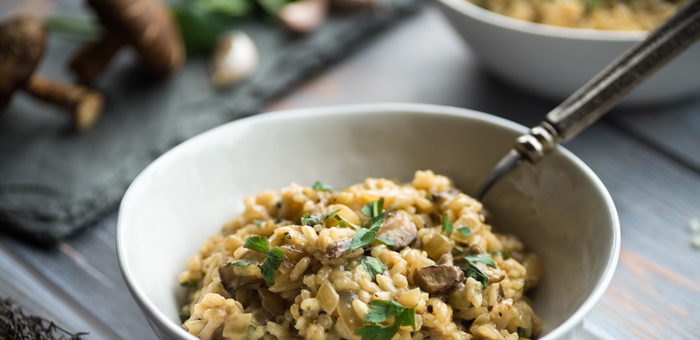The Power of Umami on Food Choices
What You Eat Affects What You Eat!

When it comes to eating, one thing really does lead to another. Research has found that consuming an umami rich broth can cause subtle changes in the brain that promote healthy eating behaviours and food choices.
In the study women were given an umami rich broth 15 minutes before eating as much as they wanted from a choice of 16 different snacks. Those who ate the umami rich broth ate fewer calories and fewer high fat and high sugar foods than those who had broth without umami. It seems that consuming an umami rich broth before meals can decrease appetite and food intake (1).
Umami
Umami is a Japanese word that describes a delicious savouyness that sits alongside the other basic tastes, sweet, salty, bitter and sour. It was first described by a Japanese scientist in 1908. Umami imparts depth and fullness of flavour to food while at the same time blending with the other tastes and flavours in the dish, making it hard to single out.
The need for umami is reflected in the fact that every culture in the world seeks out sources of umami to enhance their meals. For example, sea vegetables and miso in Japan and parmesan and tomato sauces in Italy. Even human breast milk is high in umami.
Foods rich in the amino acid glutamate and the ribonucleotides inosinate and guanylate tend to be those that impart umami. Umami in foods signals to the body that the food is rich in proteins that are needed for health.
Many food manufacturers have capitalised on the desire for umami by producing foods such as marmite, vegemite, Worcestershire sauce and anything containing Mono-sodium glutamate (MSG). However, MSG is linked to side effects including headaches, migraines, nausea, vomiting and rashes so maybe best avoided.
Let’s take a look at some foods that provide umami, how they do so and what to do with them.
- Mushrooms – such as shiitake and porcini mushrooms contain glutamate and gualynate. The umami effect is concentrated in the drying process so dried mushrooms impart more umami than fresh. Dried mushrooms work well in risottos, stir fries, soups, stews and casseroles.
- Sea vegetables – such as kombu, hijiki and nori contain glutamates. Kombu can be added to soups, stews and casseroles and to dried beans during cooking – this helps to improve the digestibility of the beans. Nori can be used to make sushi by wrapping the sheets around fillings such as cooked rice, vegetable batons, avocado slices and almond butter. Hijiki can be soaked and added to grated carrot or rice salads and stir fries.
- Yeast extract – such as marmite and vegemite can be used instead of stock cubes in soups, stews and casseroles to add depth and flavour.
- Miso and tamari soy sauce – these fermented soy products are rich in glutamates. During the fermentation process the proteins in soy beans are broken down to release the umami rich amino acid. Both can be used to flavour soups, stews and casseroles. Tamari works well in salad dressings and dips such as hummous.
- Tomato puree – when tomatoes are cooked down into a sauce or paste the umami becomes concentrated. Tomato purée can be used in home made baked beans, sauces, soups and casseroles.
- Kimchi and sauerkraut – during fermentation micro-organisms break down the proteins in vegetables to release glutamate.
- Slow cooking – when foods are cooked slowly the glutamates are released from the proteins meaning umami increases with time.
So, if you feel you need to improve your food choices try drinking an umami rich broth before meals. And the next time you feel your food needs a bit more savoury deliciousness think umami!
References
- 1. Imada T, Hao SS et al. Supplementing chicken broth with monosodium glutamate reduces energy intake from high fat and sweet snacks in middle-aged healthy women. Appetite